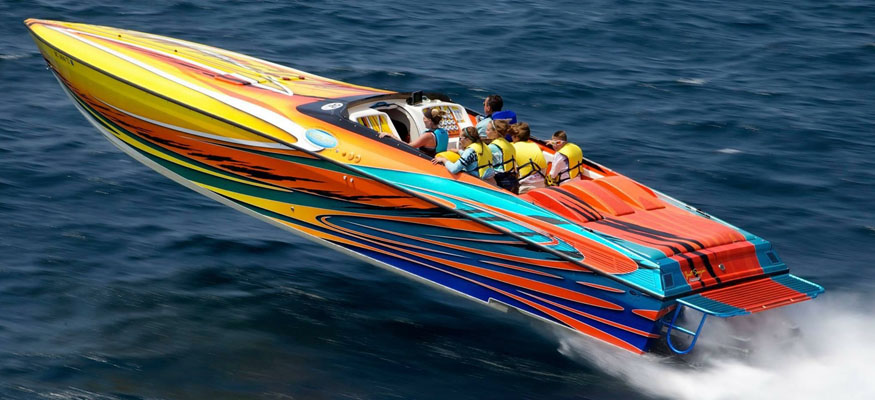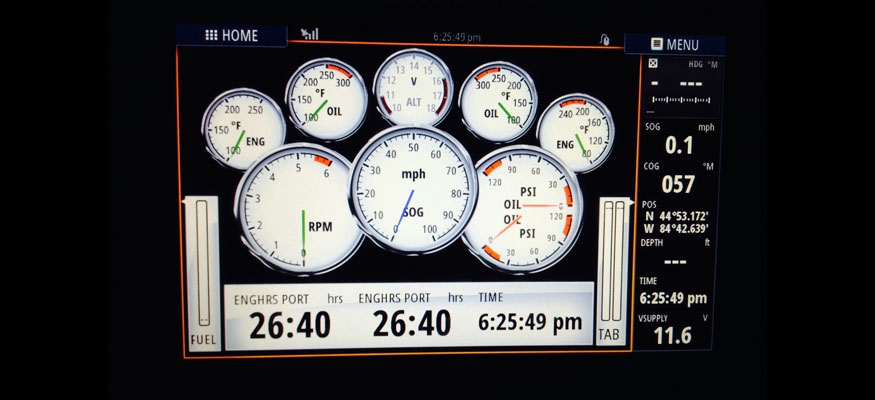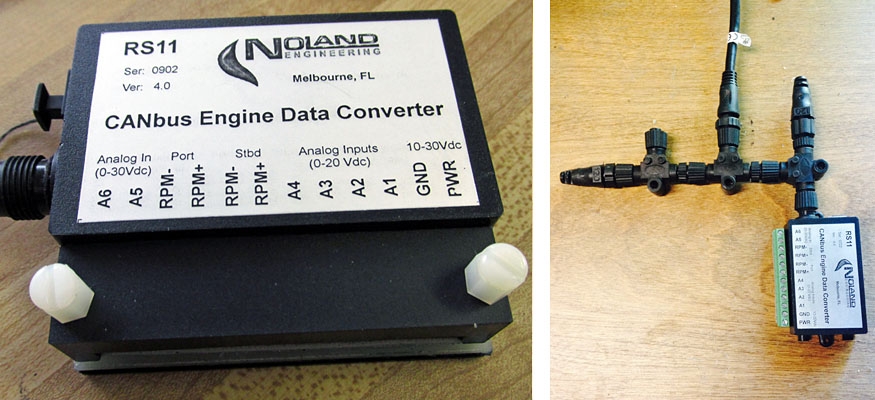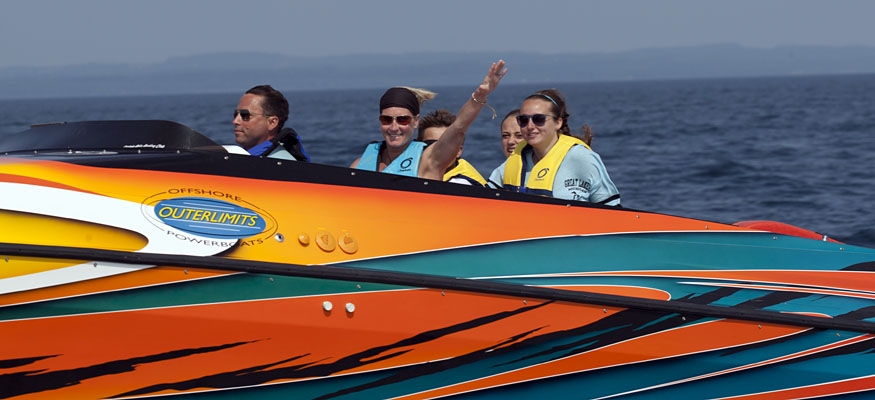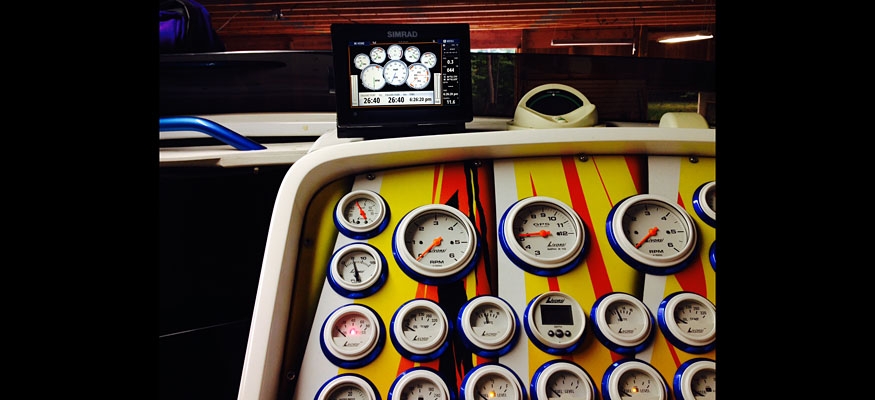Goodwin-Powered Outerlimits Upgraded with New Chartplotter, Engine Monitoring System
Pete Opperman, an optometrist from Northern Michigan who owns a 1998 37-foot Stiletto from Outerlimits Offshore Powerboats, is proud of the boat he bought four years ago—especially since he’s upgraded to a set of 725-hp, 600-cubic-inch Goodwin Competition engines and IMCO Marine SCX drives.
If Pete Opperman had his way, he’d run his Outerlimits with his family every summer weekend. Photo by Pete Boden/Shoot 2 Thrill Pix

Once he determined what system he wanted with engine display capabilities—Opperman opted for the new Simrad Go7, which costs $799 and features a 7-inch display with intuitive touchscreen controls and tons of customization options—all he needed to do was purchase and install the NMEA 2000 backbone kit for $80 and the essential NoLand RS11 CANbus Engine Data Converter for $280.
The NoLand RS11, the essential piece of the puzzle, was pretty easy to install according to Opperman.
“Simply connect the NMEA 2000 cable/backbone to the RS11 and run jumper wires from the back of each gauge you want to monitor to the RS11,” Opperman said. “The unit allows you to monitor six gauges and tachometers. I chose to monitor oil pressure, oil and engine temperatures, and rpm for each engine. If I want more gauges well then I simply add a second RS11 to my backbone and connect it to the gauges I desire. It also monitors engine hours above 100 rpm.”
Opperman said he really likes the split-screen function that allows him to see the chart on the left and the gauges on the right.
Check out the slideshow above for more images of the project and Opperman’s family enjoying the 37-footer.
“The RS11 is really the first product we’ve developed that appeals to the recreational market,” said Kevin Gallagher of NoLand Engineering in Melbourne, Fla., which has been in the marine data communications business for more than 20 years with a primary focus on workboats and larger vessels. “It’s a fairly simple engine monitoring device that we came out with about five years ago and have made improvements to along the way.”
Gallagher said the RS11 takes data from existing analog engines and converts it to J-1939 or NMEA 2000 messages for use by existing vessel displays on the bus. He added that one RS11 can support up to two engines and that a person who is somewhat computer and electronics savvy should have no trouble setting it up.
“The RS11 does require some simple programming/data entry but the instructions are included,” Opperman said. “I would say if you’re a bit hands-on then you could do this project yourself just like I did.
“In addition to this being a cool add-on, the system also helps me monitor what’s happening with the boat as well some redundancy as I set up alarms on my chartplotter for oil temperature and oil pressure,” he continued. “The way I look at it, I wanted a new chartplotter and for about $350 why not add all of these other features?”

